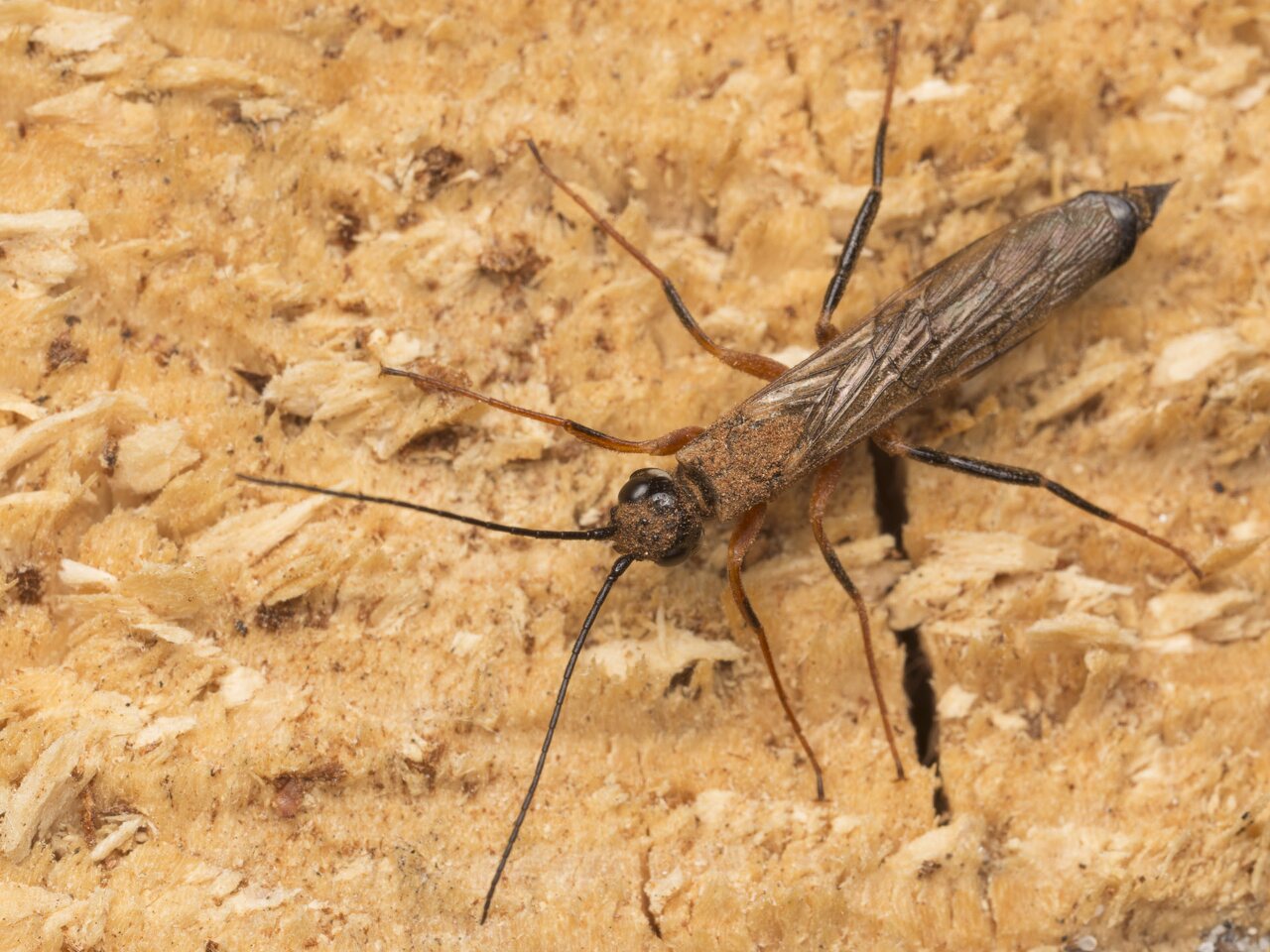
Xeris spectrum · juodasis ragauodegis
- dark-hipped woodwasp
- Schwarze Kiefernholzwespe
- melnā ragaste
- kruszel czarny
https://en.wikipedia.org/wiki/Xeris_spectrum It is large wasp with a powerful ovipositor in females. Unlike other Siricid Wood wasps, Xeris spectrum does not have symbiotic fungi to aid its larvae as they burrow in the wood of fir and other conifer trees making it unique in the Siricidae. It is widespread and is found in large parts of Europe, Asia, Africa and North America.
The body of Xeris spectrum is cylindrical. The head is broadest behind the eyes, and antennae are thread-shaped. Both sexes are equal in length, between 12 and 28 mm. The body is black or dark brown and shiny with white spots behind the eyes and on the sides of the prothorax. Xeris spectrum's legs are orange-red. Males have brown rings around the leg. The body of the larvae is cylindrical and slightly flattened and is up to 25 mm long. The pupa is 13 to 50 mm in length. The antennae of the pupa extend beyond the wings at the level of the eighth segment.
Xeris spectrum are found in open pine forests. Males often begin to fly a few days earlier than females. The females drill their ovipositors into the tree, just under the bark, and deposit their eggs. Females lay eggs in coniferous trees, usually spruce, pine and larch. Adult Xeris spectrum emerge from their holes at two different times: one group emerges in summer with the species of other wood wasps, while the other group emerges the next spring. 3366
0 comments
Add a comment